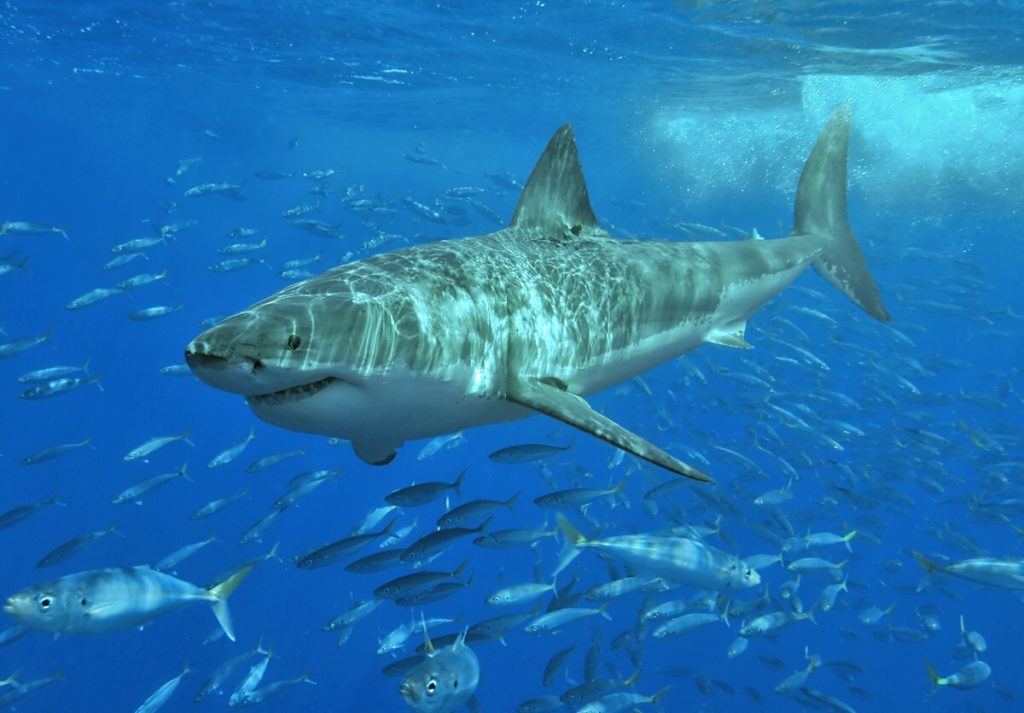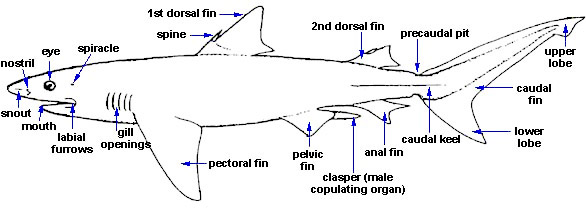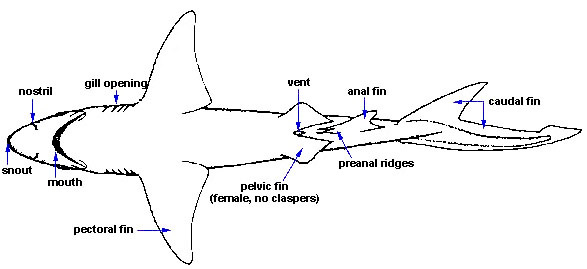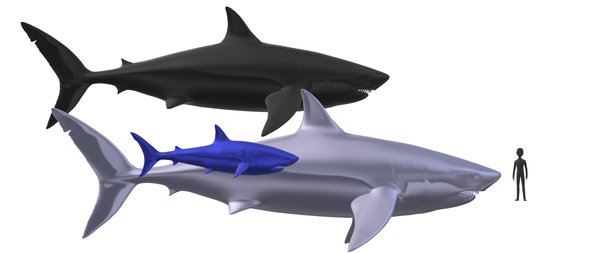SHARK FACTS
Sharks have been around for about 450 million years. That’s longer than dinosaurs.
There are almost 500 species of shark. They can range from a few inches to 40 feet in length. The following video shows you just some of them.
“Humans are by far the greatest enemy of sharks,” according to shark biologist Samuel Gruber. In a 2006 study, it was stated that some 73 million sharks are killed by humans each year. “Shark finning is the act of removing fins from sharks and discarding the rest of the shark back into the ocean. This act is prohibited in many countries.[1] The sharks are often still alive when discarded, but without their fins.[2][3][4] Unable to swim effectively, they sink to the bottom of the ocean and die of suffocation or are eaten by other predators. Shark finning at sea enables fishing vessels to increase profitability and increase the number of sharks harvested, as they must only store and transport the fins, by far the most profitable part of the shark; the shark meat is bulky to transport.[5] Many countries have banned this practice and require the whole shark to be brought back to port before removing the fins.” Wikipedia

Hammerhead Sharks binocular vision and the ability to see 360 degrees. “The eyes of hammerhead sharks are tilted slightly forward,” as BBC Earth put it, “allowing the field of vision of each to significantly overlap.”
Sharks cannot make sounds. Shark expert Peter Klimley (otherwise known as Dr. Hammerhead) explained to NOVA, “Female hammerhead sharks do chase smaller and less strong sharks from the center of schools by performing a threat consisting of reverse flip and full twist in diving parlance.”
Shark skins are like sandpaper. Their skin helps them to swim faster. It reduces drag and moves them forward. Sharks have “dermal denticles,” or tooth-like scales on their exterior. Each scale is covered with a substance similar to the enamel that covers our teeth.


Liver oils keep them from having to eat when they migrate. They live on the fat stored in their livers and other organs so they do not have to stop to eat when they migrate. Sharks can swim for days without stopping. Great Whites have been known to travel 2,500 miles, not stopping to eat or rest.

Sharks are born with all their teeth. So they are born ready to fight off predators.
Different species of sharks have different teeth. Mako sharks have very pointed teeth, while white sharks have triangular, serrated teeth. Each leaves a unique, tell-tale mark on its prey. A sandbar shark will have around 35,000 teeth over the course of its lifetime!
Sharks constantly replace their teeth. Sharks can grow up to 50,000 teeth in their lifetime. The ocean floor is littered with trillions of shark teeth.

Different shark species reproduce in different ways. Sharks exhibit great diversity in their reproductive modes. There are oviparous (egg-laying) species and viviparous (live-bearing) species. Oviparous species lay eggs that develop and hatch outside the mother’s body with no parental care after the eggs are laid.
Some shark species can give birth to up to 135 pups. The amount varies by species.
Whale sharks have 6-inch skin. This makes it incredibly hard for Biologists to draw blood samples.
The Whale Shark is the largest fish in the ocean. It can grow up to 40 feet long.
Whale Sharks have “fingerprints”. Each Whale Shark’s spot pattern is as unique as a human fingerprint.
Sharks can move both their upper and lower jaws. This makes it easier for them to get a good grip on their prey when they attack.

Sharks heat their eyes. Some sharks (including great whites, mako, and porbeagle sharks) have a special retina that warms their eyes and brains. As WildAid explains, “For mako sharks, who travel vertically and come across very different temperatures in a short time, the retained warmth is especially important to keep the eyes and brain stabilized.”
Parts of a shark


Sharks can hear distressed prey as much as 3,000 feet away. Usually, the contracting muscle tissue of struggling fish emits low-frequency sounds that sharks can hear.
You can tell a shark’s age by its vertebrae. According to Smithsonian, “Recently, scientists have been using a new method of determining shark age: by using a radiocarbon timestamp found in the vertebrae of sharks left over from nuclear bomb testing in the 1950s and 1960s.”

The Goblin Shark is a living fossil. It is older than the Megladon and lives deep in the ocean.
Sharks have an acute sense of smell. They can smell one drop of blood in an area the size of an olympic size pool but not in an area the size of any ocean as many movies would lead you to believe.
The Lantern Shark lives off tropical coasts deep in the ocean.
How big is a Great White compared to a Megladon? Peter Klimley, a shark expert at the University of California at Davis, told National Geographic, “A great white is about the size of the clasper, or penis, of a male Megalodon.”

Black: Meg (AVG)
White: Meg(MAX)
Blue: Great white (MAX)
The largest predator that ever lived was the Carcharodon megalodon. It “first appeared about 16 million years ago, grew to 55 feet long and weighed as much 25 tons, before going extinct about 2.5 million years ago, making it the largest predator that ever lived, eating dolphins, whales, and other megalodons.”
Sharks don’t have bones. Their skeleton is made up of muscle and cartilage. This helps them make sharp maneuvers when swimming.
Tiger sharks are like garbage pits. They’ll eat anything – license plates, cameras, money, even other sharks.
Shark attacks aren’t as common as the news media would have you believe, and the fear of sharks is largely unwarranted. The tiger shark, however, is one of the few sharks known to attack swimmers and surfers unprovoked. It’s sometimes called the man-eater shark, for good reason. Sep 14, 2019
Shark attacks are widely publicized, but As National Geographic points out, “The U.S. averages just 19 shark attacks each year and one shark-attack fatality every two years. Meanwhile, in the coastal U.S. states alone, lightning strikes and kills more than 37 people each year.”
Some Sharks live in freshwater lakes and rivers. Bull sharks are found in tropical rivers and have evolved to swim between salt and fresh water. River sharks have been found in rivers in areas of South Asia, New Guinea, and Australia.
I hope you have enjoyed this blog presentation “Shark Facts”. Thank you for your support.
If you liked this blog, subscribe to our website newsletter. Check out our website Nature’s Wildlife and Flowers to learn about upcoming blogs and news features.
Acknowledgments
NOAA Fisheries – July 17, 2018 – Last updated by Office of Communications on April 29, 2022
https://www.fisheries.noaa.gov/feature-story/12-shark-facts-may-surprise-you
Wikmedia
Wikipedia
National Geographic
Best Life Online/ ALEX DANIEL July 10, 2018